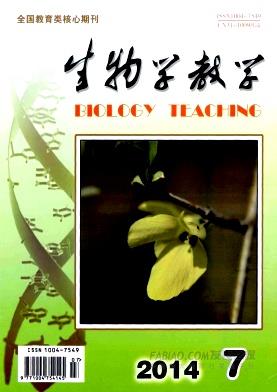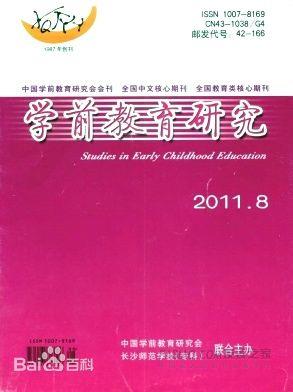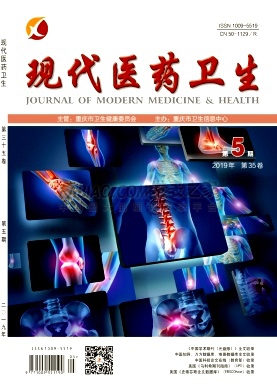背景:脊髓型颈椎病是脊柱外科常见的颈椎退行性疾病,具有较高的致残率;手术减压是阻止疾病继续发展的最有效方法,然而患者术后常伴有感觉和运动功能障碍等残余神经症状,目前临床上对于脊髓型颈椎病患者术后神经功能恢复的药物治疗方案仍不明确。
目的:探讨甲钴胺联合鼠神经生长因子对脊髓型颈椎病术后神经功能恢复的疗效。
方法:2017年6月至2018年9月徐州医科大学附属医院收治的脊髓型颈椎病患者82例,随机分为研究组41例和对照组41例;对照组患者给予鼠神经生长因子注射液,研究组患者在对照组基础上加用甲钴胺注射液,所有患者治疗2周,分别记录2组患者术前及术后的症状和体征,利用颈椎功能障碍指数评分(Neck Disability Index,NDI)和日本骨科协会评估治疗分数量表(Japanese Orthopedic Association,JOA)进行术后神经功能评估。
结果与结论:在术后1,3,6个月及1年时,两组患者的NDI评分均较术前降低(P< 0.05),JOA评分均较术前升高(P< 0.05);治疗6个月和1年时,研究组NDI评分显著低于对照组(P< 0.05),JOA评分显著高于对照组(P< 0.05)。结果表明甲钴胺联合鼠神经生长因子有助于脊髓型颈椎病患者术后神经功能的恢复,且效果优于单用鼠神经生长因子治疗。
BACKGROUND:Cervical spondylotic myelopathy is a common degenerative disease of the cervical spine in spinal surgery. Surgical decompression is the most effective method to prevent the further development of the disease. However, patients are often accompanied by residual neurological symptoms such as sensory and motor dysfunction after surgery. Currently, the drug treatment for postoperative neurological recovery of patients is still unclear clinically.
OBJECTIVE:To investigate the effect of mecobalamine combined with mouse nerve growth factor on the recovery of nerve function after cervical spondylotic myelopathy surgery.
METHODS:A total of 82 cases of cervical spondylotic myelopathy from June 2017 to September 2018 in the Affiliated Hospital of Xuzhou Medical University were enrolled in this study. All the patients were randomly divided into observation group and control group with 41 cases in each. Mouse nerve growth factor injection was applied to the control group, and mecobalamine injection was added to the research group. All the patients were treated for 2 symptoms and signs in both groups were respectively recorded before and after the treatment, and postoperative residual neurological symptoms were evaluated by Neck Disability Index (NDI) scores and Japanese Orthopedic Association scores.
RESULTS AND CONCLUSION:At 1 month, 3 months, 6 months and 1 year after the operation, the NDI scores of the two groups were lower than those before the treatment, and the JOA scores were both getting higher than those before the treatment. The NDI scores in the observation group at 6 months and 1 year after the operation were significantly lower than those in the control group, and as well, the Japanese Orthopedic Association scores were significantly higher than those in the control group. These findings indicate that the combination of mecobalamine and mouse nerve growth factor is helpful to the recovery of nerve function in patients after cervical spondylotic myelopathy surgery, and the effect is better than that of mouse nerve growth factor alone.
0 引言 Introduction
脊髓型颈椎病是一种由于颈椎慢性退行性病变导致颈椎椎管进行性狭窄,从而引起脊髓受压、感觉系统和运动系统功能紊乱的临床综合征[1-2],通常表现为感觉异常、精细运动功能逐渐丧失、运动无力等[3]。前路、后路或前后入路联合的手术干预可以给脊髓减压,重建颈椎的稳定性,尽可能挽救并保存患者的神经功能[4],但部分患者术后仍伴有残余神经症状,常表现为术前症状未完全缓解,如肢体麻木、疼痛和感觉异常[5],极大影响患者术后的生存质量。颈椎功能障碍指数评分(Neck Disability Index,NDI)可以全面评估患者颈部疼痛及相关症状,分析对患者日常生活的影响,具有较好的重复性和综合性[6];日本骨科协会评估治疗分数量表(Japanese Orthopedic Association,JOA)在脊髓型颈椎病患者普遍受累的上肢运动、下肢运动、感觉和膀胱功能4个方面进行综合评定,目前在临床上广泛应用于评估和量化脊髓型颈椎病患者功能残疾等级[7]。
甲钴胺是维生素B12的活性形式,1962年GUEST等[8]首次发现其含有生物活性的烷基钴胺;作为一种四配位辅酶,其中心的钴原子在β位上连接的是甲基,见图1。通过甲基转换反应促进核酸代谢,参与胸腺嘧啶的合成过程,促进轴索再生及髓鞘的形成,修复被损害的神经组织[9]。甲钴胺的缺乏与重要的神经病理特别是周围神经病变密切相关[10],会抑制维生素B12依赖的蛋氨酸合成酶导致S-腺苷蛋氨酸/S-腺苷同型半胱氨酸比值下降,从而损害蛋氨酸循环中的蛋氨酸保护酶,影响髓鞘中的甲基化反应,阻碍神经正常生理功能[11];在临床上,甲钴胺通过促进损伤神经的再生和拮抗谷氨酸诱导的神经毒性,发挥神经保护作用[12],已被广泛用于治疗各种原因引起的周围神经病变。鼠神经生长因子是目前发现最早的神经生长因子类型[13],它是从小鼠颌下腺中提取的一种生物活性蛋白,与人类的神经生长因子有着极高的同源性,两者的生物学效应相似,通过对靶细胞基因表达进行调控,加速损伤神经的再生[14],同时通过调控内源性神经生长因子的合成,促进轴突再生和髓鞘形成[15],目前在临床上被广泛应用于周围神经损伤的治疗。
该研究通过对2018年6月至2019年9月徐州医科大学附属医院收治的82例脊髓型颈椎病手术患者进行前瞻性对照研究,旨在探讨甲钴胺联合鼠神经生长因子在脊髓型颈椎病患者术后神经功能恢复中的应用价值。
图 1|甲钴胺的化学结构Figure 1 |The chemical structure of mecobalamine
1 对象和方法 Subjects and methods
1.1 设计 前瞻性、双盲、随机对照研究。统计学专业人员使用计算机模拟产生随机分配编码,并对分组信息进行保密保存。同时在药物治疗前后采用盲法评价,患者本人、药物发放人员、疗效评价者均对受试者的分组情况不知情。
1.2 时间及地点 于2017年6月至2018年9月在徐州医科大学附属医院完成。
1.3 对象
纳入标准:①患者的临床症状、体征及影像学资料均符合脊髓型颈椎病诊断标准,伴颈脊髓损伤;②由同一组医师根据患者病情完成手术;③术后患者自觉麻木疼痛等神经症状未完全消失;④受试者均同意参加该项研究并签署知情同意书。
排除标准:①合并椎管内肿瘤及胸腰椎疾患的患者;②合并周围神经损伤患者;③既往有颈椎手术史者;④合并有冠心病、糖尿病、肝肾功能不全等基础疾病患者;⑤出现脊髓或神经损伤、硬脊膜损伤及椎动脉损伤等手术并发症患者。
2017年6月至2018年9月于徐州医科大学附属医院收治的符合上述标准的脊髓型颈椎病患者共82例,其中男35例,女47例;年龄35-65岁,平均年龄(50.)岁;病程2-12年,平均(4.)年;经颈前路减压植骨融合术68例,颈后路全椎板或半椎板减压术11例,颈前路后路联合手术3例。采用计算机随机分配法将上述患者分为2组:研究组41例,其中男16例,女25例,年龄(49.)岁,病程(4.)年,前路手术33例,后路手术7例,前后路联合手术1例;对照组41例,其中男19例,女22例,年龄(51.)岁,病程(4.)年,前路手术35例,后路手术4例,前后路联合手术2例。
1.4 治疗方法 两组患者术后均常规予以补液、护胃、抗感染和颈托外固定等治疗。对照组术后应用鼠神经生长因子30 μg(商品名:苏肽生,北京舒泰生制药有限公司生产)和2 mL生理盐水进行肌肉注射,1次/d,连用2周;研究组在对照组基础上口服甲钴胺片(商品名:弥可保,卫材中国药业有限公司生产),500 μg/次,3次/d,连用2周,结束疗程。
1.5 主要观察指标 记录患者的性别、年龄等基本信息以及两组患者术前、术后1,3,6个月及术后1年的NDI评分和JOA评分。
1.6 统计学分析 采用 SPSS 25.0统计软件进行数据分析。计数资料以构成比或率表示,组间比较采用χ2检验;计量资料以表示,对NDI评分以及JOA评分进行统计分析,组内术前和术后评分比较采用配对样本t检验,组间比较采用独立样本t检验,P< 0.05为差异有显著性意义。
2 结果 Results
2.1 参与者数量分析 按照纳入标准、排除标准选取徐州医科大学附属医院收治的脊髓型颈椎病手术患者82例,随机分为研究组41例和对照组41例,按意向性处理,全部进入结果分析。
2.2 两组基线资料比较 研究组和对照组患者的年龄、病程、性别及手术方式等基本信息差异无显著性意义(P> 0.05),见表1;两组患者术前NDI评分、JOA评分差异无显著性意义(P> 0.05),颈脊髓损伤程度一致。
2.3 试验流程图 见图2。
表1 |两组患者基线资料比较Table 1 |Comparison of the baseline data of two groups of patients组别 性别(n) 年龄(images/BZ_9_530_1211_598_1266.png,岁)病程(images/BZ_9_530_1211_598_1266.png,年) 手术方式(n)男 女 前路 后路 前后路联合研究组 16 25 49. 4. 33 7 1对照组 19 22 51. 4. 35 4 2 t/χ2 值 0.449 -1.166 -0.167 1.210 P值 0.503 0.247 0.868 0.546
图2|试验流程图Figure 2|Trial flow chart
2.4 两组患者NDI评分比较 两组患者在术后1,3,6个月和1年的NDI评分均比术前降低,差异有显著性意义(P<0.05);两组患者术前、术后1,3个月的NDI评分差异无显著性意义(P> 0.05);术后6个月和术后1年,研究组NDI评分低于对照组,差异有显著性意义(P< 0.05),见表2。
表2 |两组患者手术前后NDI评分 (,n=41,分)Table 2 |Neck Disability Index scores before and after surgery in both groups表注:与术前比较,aP< 0.05。NDI:颈椎功能障碍指数组别 术前 术后1个月 术后3个月 术后6个月 术后1年研究组 32. 31. 29. 20. 19.对照组 32. 31. 30. 23. 21. t值 -0.245 -0.871 -1.364 -5.570 -3.359 P值 0.807 0.386 0.176 < 0.001 0.001
2.5 两组患者JOA评分比较 研究组和对照组术后1,3,6个月和1年的JOA评分较术前升高,差异有显著性意义(P< 0.05);两组患者术前、术后1,3个月的JOA评分差异无显著性意义(P> 0.05);术后6个月、术后1年,研究组JOA评分明显高于对照组,差异有显著性意义(P< 0.05),见表3。
表3 |两组患者手术前后JOA评分 (,n=41,分)Table 3 |Japanese Orthopedic Association scores before and after surgery in both groups表注:与术前比较,aP< 0.05。JOA:日本骨科协会评估治疗分数量表组别 术前 术后1个月 术后3个月 术后6个月 术后1年研究组 6. 6. 7. 9. 11.对照组 6. 6. 7. 8. 10. t值 -0.084 0.236 1.130 4.460 5.556 P 值 0.933 0.814 0.262 < 0.001 < 0.001
2.6 不良事件 所有患者均未发生颈脊髓、神经根损伤,术后血肿,椎动脉损伤,食管、气道损伤等并发症。
3 讨论 Discussion
脊髓型颈椎病是颈椎病中最为严重的亚型,早期症状较为隐匿,主要表现为颈部的酸痛伴活动受限;当病变压迫皮质脊髓束时,患者常表现为行走不稳,痉挛性步态等[16],此时可同时出现上肢麻木、无力及手的精细运动丧失,即“脊髓病手”,表现为指间关节和掌指关节伸直超过1 min,尺侧手指被动转为外展屈曲位,手的握伸动作丧失[17]。许多证据表明,若不对脊髓型颈椎病的病程进展进行及时有效干预,患者的神经症状会逐渐恶化,最终导致严重的四肢感觉、运动功能障碍[18]。外科手术通过对脊髓减压,保护脊髓功能,防止神经功能进一步损害,是阻止疾病恶化的最有效方式[19];但由于术前脊髓神经被卡压、术中脊髓神经根受刺激及术后局部血肿压迫等原因,脊髓神经不可避免受到损伤,术后常出现感觉障碍、肢体麻木疼痛等残余神经症状[20]。所以,术后尽可能恢复患者脊髓神经功能对改善患者生活质量意义重大,是亟待研究解决的临床问题。
研究表明,维生素B12在大脑、神经系统的正常运作和血液的形成过程中起着关键的作用,它参与人体内的多种代谢过程,如DNA的合成与调节、脂肪酸的合成及能量的产生[21]。甲钴胺作为辅酶型维生素B12,直接参与同型半胱氨酸代谢,能够被神经元亚细胞器吸收,从而有效治疗神经功能紊乱[22]。有研究制备豚鼠面神经麻痹模型,通过肌电图、瞬目反射及组织学研究实验证实,甲钴胺具有加速损伤神经修复、缓解麻木疼痛症状的作用[23]。甲钴胺通过增强神经细胞内蛋白质以及核酸的生成,促进髓鞘卵磷脂的合成,加快周围神经损伤后的修复进程[24],目前在临床上广泛应用于各种疾病导致的周围神经病变。鼠神经生长因子作为一种常见的外源性神经生长因子,因其具有促进神经元存活和生长的能力而受到广泛研究[25];作为一种靶源性神经营养因子,它能够维持神经元的发育,促进神经递质的合成[26]。目前,鼠神经生长因子已被广泛用于治疗中枢神经损伤,取得了良好的治疗效果,并且应用时间越早,临床预后越好[27];同时有研究表明,鼠神经生长因子能够促进外伤性视神经病变以及脑梗死患者神经功能的恢复[28]。目前,甲钴胺联合鼠神经生长因子已被证实能够有效促进合并足下垂的腰椎间盘突出症患者的神经功能恢复[29],且在特发性面神经麻痹和慢性乙醇中毒性周围神经病变中取得了理想的治疗效果[30]。
该研究将脊髓型颈椎病患者随机分为研究组和对照组,分别于术后联合应用甲钴胺和鼠神经生长因子以及单纯使用鼠神经生长因子进行治疗,观察评估患者术后神经功能恢复情况。结果显示,研究组患者术后神经功能恢复可,与对照组相比无特殊并发症出现,说明甲钴胺联合鼠神经生长因子在脊髓型颈椎病患者术后应用是安全可靠的;术后1,3个月时,研究组和对照组的JOA评分以及NDI评分差异无显著性意义,而在术后6个月和术后1年,研究组的NDI评分相比对照组明显下降、JOA评分显著升高,提示甲钴胺联合鼠神经生长因子在治疗早期并不能显著改善患者感觉和运动功能,这是由于神经营养药物具有后继效应,随着时间的推移,患者神经功能恢复会愈发明显,说明甲钴胺联合鼠神经生长因子的治疗效果更佳,两者效应相互叠加,对患者的术后神经功能恢复起协同作用。
综上所述,甲钴胺联合鼠神经生长因子用于治疗脊髓型颈椎病患者术后神经功能效果好,在长期疗效中能够显著促进脊髓型颈椎病患者术后神经功能恢复,明显提高患者术后生存质量,值得在临床上推广应用。
[1]RYU WHA, PLATT A, DEUTSCH H. Hybrid decompression and reconstruction technique for cervical spondylotic myelopathy: case series and review of the literature. J Spine Surg. 2020;6(1):181-195.
[2]NORI S, SHIRAISHI T, AOYAMA R. Comparison between muscle-preserving selective laminectomy and laminoplasty for multilevel cervical spondylotic myelopathy. Ann Transl Med. 2020;8(5):160.
[3]LEBL DR, HUGHES A, CAMMISA FP Jr, et al. Cervical spondylotic myelopathy:pathophysiology, clinical presentation, and treatment. HSS J. 2011;7(2):170-178.
[4]BAKHSHESHIAN J, MEHTA VA, LIU JC. Current Diagnosis and Management of Cervical Spondylotic Myelopathy. Global Spine J. 2017;7(6):572-586.
[5]FOUYAS IP, STATHAM PF, SANDERCOCK PA. Cochrane review on the role of surgery in cervical spondylotic radiculomyelopathy. Spine (Phila Pa 1976).2002;27(7):736-747.
[6]FLECK SK, LANGNER S, ROSENSTENGEL C, et al. 3-Tesla Kinematic MRI of the Cervical Spine for evaluation of Adjacent Level Disease After Monosegmental Anterior Cervical Discectomy and Arthroplasty: Results of 2-Year Follow-Up. Spine (Phila Pa 1976). 2017;42(4):224-231.
[7]KATO S, OSHIMA Y, OKA H, et al. Comparison of the Japanese Orthopaedic Association (JOA) score and modified JOA (mJOA) score for the assessment of cervical myelopathy: a multicenter observational study. PLoS One. 2015;10(4):e0.
[8]GUEST JR, FRIEDMAN S, WOODS DD, et al. A methyl analogue of cobamide coenzyme in relation to methionine synthesis by bacteria. Nature. 1962;195:340-342.
[9]ZHANG D, YANG W, WANG C, et al. Methylcobalamin-Loaded PLCL Conduits Facilitate the Peripheral Nerve Regeneration. Macromol Biosci. 2020;20(3):e.
[10]ANDRUNIóW T, LODOWSKI P, GARABATO BD, et al. The role of spin-orbit coupling in the photolysis of methylcobalamin. J Chem Phys. 2016;144(12):.
[11]TEFFERI A, PRUTHI RK. The biochemical basis of cobalamin deficiency. Mayo Clin Proc. 1994;69(2):181-186.
[12]ZHANG M, HAN W, HU S, et al. Methylcobalamin: a potential vitamin of pain killer. Neural Plast. 2013;2013:.
[13]LIU SY, LIU SZ, LI Y, et al. Mouse Nerve Growth Factor Facilitates the Growth of Interspinal Schwannoma Cells by Activating NGF Receptors. J Korean Neurosurg Soc. 2019;62(6):626-634.
[14]GAO L, GE R, XIE G, et al. Hearing Improvement in A/J Mice via the Mouse Nerve Growth Factor. Clin Exp Otorhinolaryngol. 2017;10(4):303-308.
[15]WILD KD, BIAN D, ZHU D, et al. Antibodies to nerve growth factor reverse established tactile allodynia in rodent models of neuropathic pain without tolerance. J Pharmacol Exp Ther. 2007;322(1):282-287.
[16]KARADIMAS SK, GATZOUNIS G, FEHLINGS MG. Pathobiology of cervical spondylotic myelopathy. Eur Spine J. 2015;24 Suppl 2:132-138.
[17]LEBL DR, BONO CM. Update on the Diagnosis and Management of Cervical Spondylotic Myelopathy. J Am Acad Orthop Surg. 2015;23(11):648-660.
[18]SADASIVAN KK, REDDY RP, ALBRIGHT JA. The natural history of cervical spondylotic myelopathy. Yale J Biol Med. 1993;66(3):235-242.
[19]CHANG V, HOLLY LT. Controversies in the management of cervical spondylotic myelopathy. J Neurosurg Sci. 2013;57(3):241-252.
[20]KADANKA Z, MARES M, BEDNANíK J, et al. Approaches to spondylotic cervical myelopathy: conservative versus surgical results in a 3-year followup study. Spine (Phila Pa 1976). 2002;27(20):2205-2210.
[21]BANERJEE R, RAGSDALE SW. The many faces of vitamin B12: catalysis by cobalamin-dependent enzymes. Annu Rev Biochem. 2003;72:209-247.
[22]JIANG DQ, XU LC, JIANG LL, et al. Fasudil combined with methylcobalamin or lipoic acid can improve the nerve conduction velocity in patients with diabetic peripheral neuropathy: A meta-analysis. Medicine (Baltimore).2018;97(27):e.
[23]OKADA K, TANAKA H, TEMPORIN K, et al. Akt/mammalian target of rapamycin signaling pathway regulates neurite outgrowth in cerebellar granule neurons stimulated by methylcobalamin. Neurosci Lett. 2011;495(3):201-204.
[24]胡韶楠,顾玉东,王欢,等.弥可保对周围神经再生作用的临床研究[J].中华手外科杂志,1999,15(1): 34-35.
[25]WANG Q, ZHAO H, ZHENG T, et al. Otoprotective effects of mouse nerve growth factor in DBA/2J mice with early-onset progressive hearing loss. J Neurosci Res. 2017;95(10):1937-1950.
[26]訾英,刘欣伟,李哲,等.应用鼠神经生长因子修复周围神经损伤对骨质疏松的影响[J].中国组织工程研究, 2014, 18(51): 8233-8237.
[27]吴芳芳,楚胜华,马延斌,等.神经生长因子治疗重型颅脑损伤的临床观察[J].中华神经医学杂志,2010,9(2): 190-192.
[28]黄侠,李秋明.鼠神经生长因子治疗外伤性视神经病变的临床观察[J].神经损伤与功能重建,2010,5(6): 433-435.
[29]林红,姜允琦,李超,等.鼠神经生长因子联合甲钴胺治疗合并足下垂的腰椎间盘突出症[J].中华神经医学杂志, 2013,12(9): 936-939.
[30]杨波,李京.鼠神经生长因子联合甲钴胺治疗慢性乙醇中毒性周围神经病疗效观察[J].山东医药, 2015, 55(38): 38-39.
背景:脊髓型颈椎病是脊柱外科常见的颈椎退行性疾病,具有较高的致残率;手术减压是阻止疾病继续发展的最有效方法,然而患者术后常伴有感觉和运动功能障碍等残余神经症状,目前临床上对于脊髓型颈椎病患者术后神经功能恢复的药物治疗方案仍不明确。
目的:探讨甲钴胺联合鼠神经生长因子对脊髓型颈椎病术后神经功能恢复的疗效。
方法:2017年6月至2018年9月徐州医科大学附属医院收治的脊髓型颈椎病患者82例,随机分为研究组41例和对照组41例;对照组患者给予鼠神经生长因子注射液,研究组患者在对照组基础上加用甲钴胺注射液,所有患者治疗2周,分别记录2组患者术前及术后的症状和体征,利用颈椎功能障碍指数评分(Neck Disability Index,NDI)和日本骨科协会评估治疗分数量表(Japanese Orthopedic Association,JOA)进行术后神经功能评估。
结果与结论:在术后1,3,6个月及1年时,两组患者的NDI评分均较术前降低(P< 0.05),JOA评分均较术前升高(P< 0.05);治疗6个月和1年时,研究组NDI评分显著低于对照组(P< 0.05),JOA评分显著高于对照组(P< 0.05)。结果表明甲钴胺联合鼠神经生长因子有助于脊髓型颈椎病患者术后神经功能的恢复,且效果优于单用鼠神经生长因子治疗。
BACKGROUND:Cervical spondylotic myelopathy is a common degenerative disease of the cervical spine in spinal surgery. Surgical decompression is the most effective method to prevent the further development of the disease. However, patients are often accompanied by residual neurological symptoms such as sensory and motor dysfunction after surgery. Currently, the drug treatment for postoperative neurological recovery of patients is still unclear clinically.
OBJECTIVE:To investigate the effect of mecobalamine combined with mouse nerve growth factor on the recovery of nerve function after cervical spondylotic myelopathy surgery.
METHODS:A total of 82 cases of cervical spondylotic myelopathy from June 2017 to September 2018 in the Affiliated Hospital of Xuzhou Medical University were enrolled in this study. All the patients were randomly divided into observation group and control group with 41 cases in each. Mouse nerve growth factor injection was applied to the control group, and mecobalamine injection was added to the research group. All the patients were treated for 2 symptoms and signs in both groups were respectively recorded before and after the treatment, and postoperative residual neurological symptoms were evaluated by Neck Disability Index (NDI) scores and Japanese Orthopedic Association scores.
RESULTS AND CONCLUSION:At 1 month, 3 months, 6 months and 1 year after the operation, the NDI scores of the two groups were lower than those before the treatment, and the JOA scores were both getting higher than those before the treatment. The NDI scores in the observation group at 6 months and 1 year after the operation were significantly lower than those in the control group, and as well, the Japanese Orthopedic Association scores were significantly higher than those in the control group. These findings indicate that the combination of mecobalamine and mouse nerve growth factor is helpful to the recovery of nerve function in patients after cervical spondylotic myelopathy surgery, and the effect is better than that of mouse nerve growth factor alone.
文章来源:神经药理学报 网址: http://sjylxb.400nongye.com/lunwen/itemid-42009.shtml
上一篇: 几丁糖/聚乙烯醇导管联合脑源性神经营养因子缓
下一篇: 地质学论文_陆相细粒沉积岩与古土壤深时气候分析方法综述





